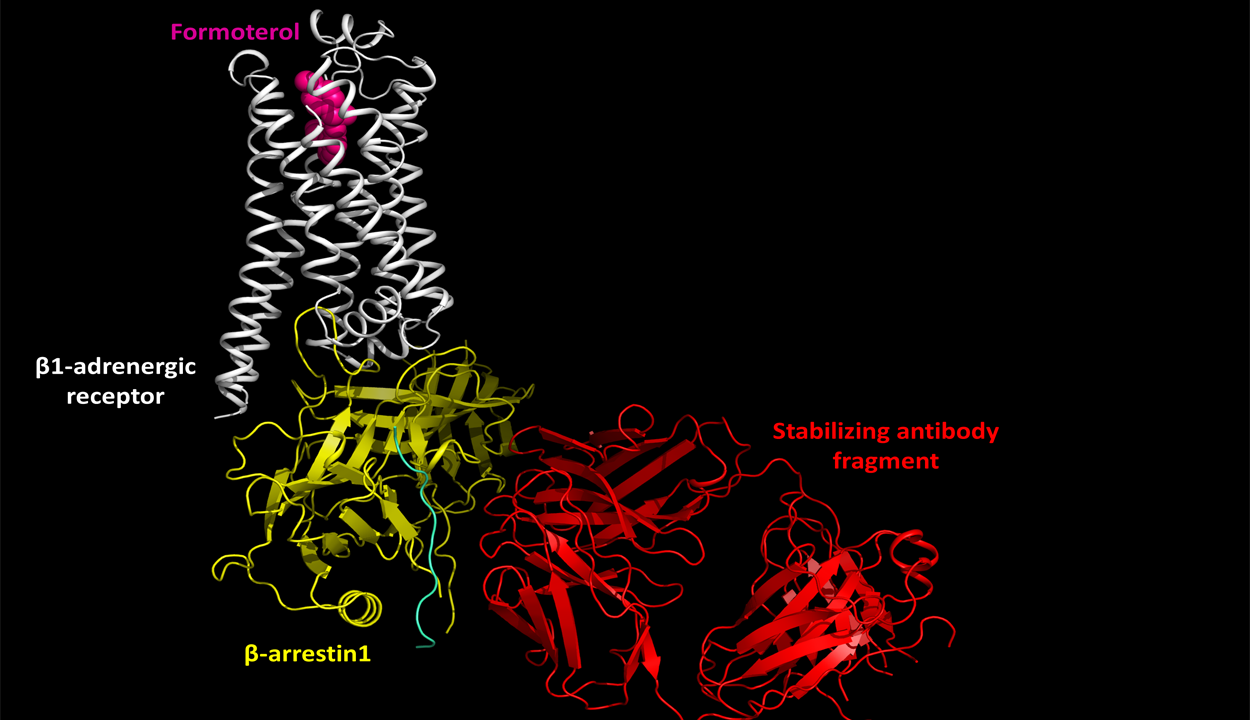
Asthma Medicine Mode of Action Revealed
- News
- 1.4K
In a research article published in Nature, a team of researchers including Prof. Arun Shukla’s laboratory at IIT Kanpur, describe the structure of an asthma drug in complex with its target receptor and a regulatory protein in action. This study should facilitate designing better drugs for asthma and related respiratory disorders in the future.
Asthma is a life-changing health condition with a higher prevalence in children. Asthma causes inflamed airways and constricting it, which in turn makes breathing difficult. Medicines prescribed for this act by relaxing muscles of airways. A key component in many of the drugs is Formoterol. It is a bronchodilator and it relaxes the smooth muscles present in the airways.
Formoterol binds to beta-adrenergic receptors present on the surface of the airways smooth muscle cells. Formoterol’s action via the beta-adrenergic receptors provides relief from breathing problems due to its sustained activity and thus it is also known as a long-acting beta-agonist (LABA).
Although this drug is widely used, it’s mechanism of action was a mystery. The receptor to which it binds has seven different loops in the membrane and the current study published in the journal ‘Nature’ has uncovered the intricate details. This was a mammoth job and Dr. Arun Shukla’s laboratory and his UK collaborators were finally successful in tackling it using a Cryo-electron microscope.
In this study, Cryo-electron microscopy allowed the researchers to visualize the atomic details of how formoterol binds to the beta1 adrenergic receptor and turns it on. They also captured a signaling and regulatory protein called beta-arrestin in the same complex, which is a key player in mediating the cellular responses triggered by the binding of formoterol to the receptor.
Such protein complexes are generally very short-lived in cells and therefore, the authors used a synthetic antibody fragment against beta-arrestin to lock the entire complex together and then visualized it under the microscope. The availability of this structure now allows scientists to better understand how this particular drug acts on the receptor and activates the downstream signaling pathways that result in relief from asthma symptoms.
“The drug design requires detailed knowledge of cell surface receptors and intracellular signaling molecules,” opines Prof. Shukla. “The insights from the recent study at the atomic level furthers our knowledge and should directly impact drug discovery for many such health conditions,” he adds.
Further, the authors are now trying to visualize similar complexes of other receptors involved in various human diseases such as inflammatory disorders, Parkinson’s disease, obesity, heart failure, and cancer. These studies are likely to help better understand the inner workings of this important class of drug targets and thereby, open novel avenues for designing better medicines to treat multiple human disorders in the future.
Dr. Shukla’s research program at IIT Kanpur is supported by The DBT Wellcome Trust India Alliance, Department of Biotechnology (DBT), Department of Science and Technology (DST), Scientific and Engineering Research Board (SERB), Lady TATA Memorial Trust and Council for Scientific and Industrial Research (CSIR).
Rajesh D. Gunage, Ratneshwar Thakur
If you liked this article, then please subscribe to our YouTube Channel for the latest Science & Tech news. You can also find us on Twitter & Facebook


